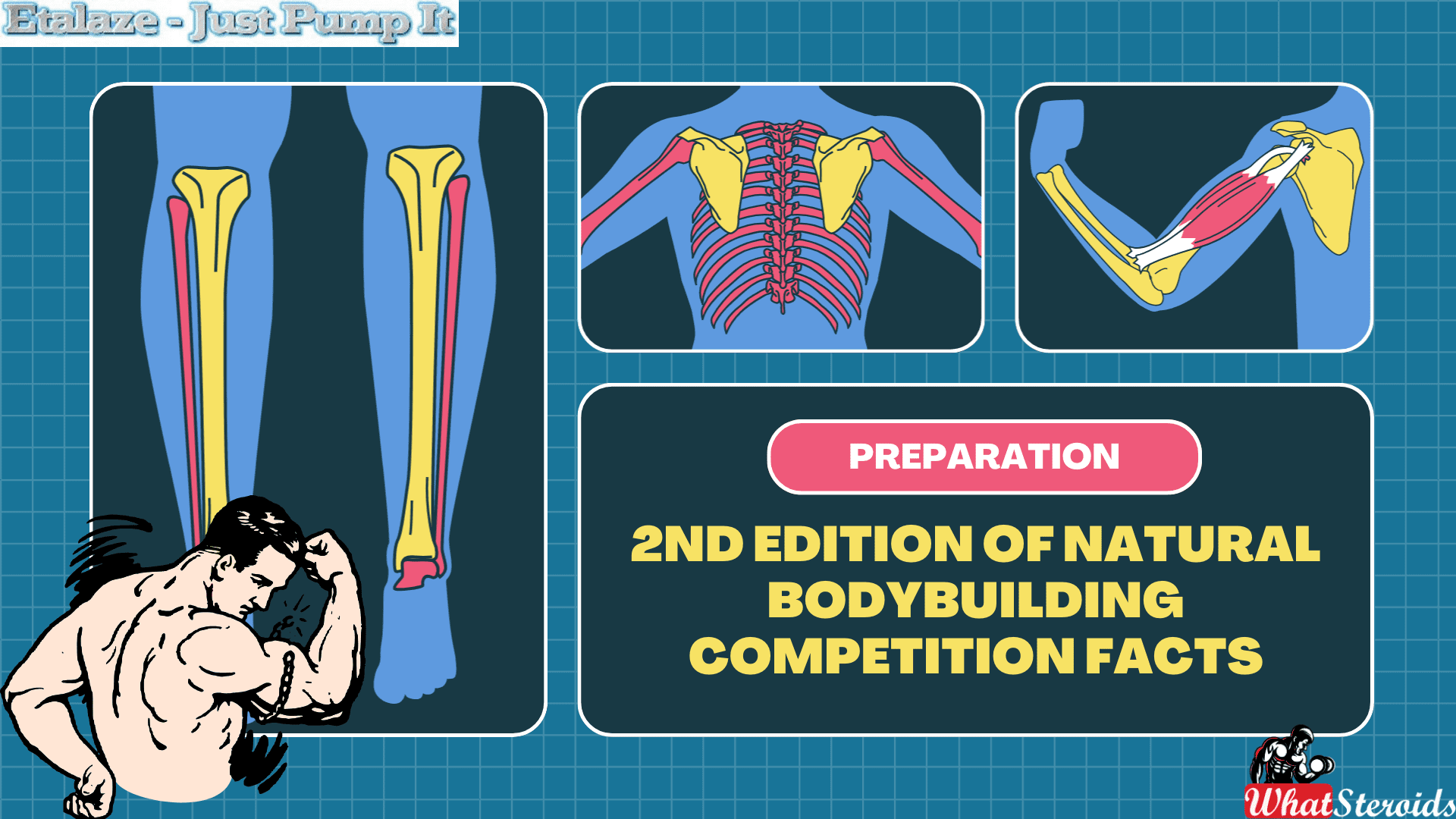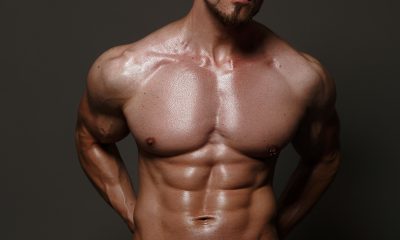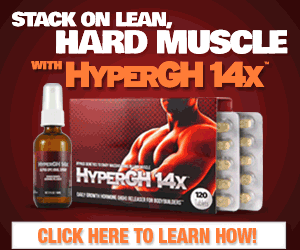Bodybuilding
The Truth Beneath That 6-Pack
The world of ab training is full of gimmicks and quick-fixes. Learn the truth about getting that coveted 6-pack, even if it’s not what you want to hear! If you've done more leg lifts than a toll gate or spent more time in a Roman chair than Julius Caesar, but that coveted 6-pack is nowhere to be found, you've probably exhausted Google searching for answers. Ab training seems like a mystery.
Maybe it's because the abs have so many functions and are responsible for so many movements; or perhaps it's the infinite number of ab exercise choices; it could also be all those TV commercials offering the new secret ab weapon for $29.95.
Despite their aura of mystery, ab training questions do have answers. But, before you read any further, let me warn you: some of this information may make you realize you've been wasting a lot of time. Until now, that is.
What Exactly Is A 6-Pack?

The abdominal region is made up of several different muscles, but the actual 6-pack that shows through is the rectus abdominis. It's a single muscle that's long and flat like a small surfboard and it runs vertically from your hips to your rib cage. The 6-pack is formed by the fibrous tendons reinforcing the fascia that covers the muscle.
You could possess abdominal muscles that resemble the underside of an ice cube tray, but if your body fat level isn't low enough, no one will ever see them. The rectus abdominis has a couple of functions. The primary role is "anti-extension" of the spine; the secondary role is to pull the hips toward the chest or the chest toward the hips.
This muscle is made up of mostly slow-twitch fibers, designed for endurance; but it's basically a muscle like any other, and it should be worked with the same principles of muscle building that you would apply to all your other muscle groups.
Must Read: How to Get Six Pack Abs Fast with Proven Steroids?
What's Wrong With My Ab Training?

If you ask 10 fitness experts how to build great abs, I guarantee you'll get vastly different answers. Some say you best grow abs by performing structural exercises like squats, deadlifts and standing overhead lifts. While these exercises are some of the most effective for building overall strength - and involve just about every muscle in your body - you still need to single out each muscle group separately for maximum growth.
Another expert would have you do static holds like planks, dead bugs or Supermans. These, too, are worth your effort because they've been shown to improve core stability and protect the spine. But would you try to build any other muscle group with a static hold?
Strategies
Another strategy I see in most articles, and from most trainers, is a long list of low-intensity ab exercises done one after the other. This adds up to hundreds of reps. I guess the intention is to make trainees believe that never-ending reps burn fat right off their bellies.
I hope there's no one out there who still believes in the myth of 'spot reduction.' Sadly, the general rule of body fat is "the first place you gain fat is the last place you lose it." I often see experts advising various leg or knee lift movements. Let's get one thing straight: ab muscles are not connected to your legs! Hip flexors are responsible for pulling your legs forward.
Don't believe me? Take this test: Stand up straight and relax your abs. Press your fingers into your abs so you would feel if they activate. Now raise one leg up in front of you. Did you feel any flexion in your abs? No! If your spine isn't moving, you're only using your abs for stabilization. For leg lifts or knee lifts to hit your abs, you need to crunch your hips toward your shoulders.
Like the rectus abdominis, hip flexors bring your hips to your shoulders and your shoulders to your hips. Hip flexors pull the legs forward; they also pull the torso toward the legs. If your legs are stabilized in a Roman chair or your feet are anchored for old-fashioned sit-ups, chances are you're just holding your abs in a static contraction. Meanwhile, your hip flexors do all the real work.
I see the same situation when someone does cable crunches using a high pulley. They hold their spine in a fixed position and the hip flexors are responsible for all the effort.
So, Which Exercises Are Most Effective?
Lying Knee-Raises

Lie on your back on a flat bench and scoot down so half of your butt hangs off the bench. The edge of the bench should be just at your tailbone. Grasp both sides of the bench firmly. Your knees should be at a 90-degree angle and your toes should touch the floor. You should feel a stretch in your abs. This is your starting point.
Slowly tense your abs and bring your knees up in an arc until they point up toward the ceiling. Continue to contract your abs, bringing your butt off the bench, until your knees touch your elbows. Hold for a second. This is your finish position. Slowly lower your knees back down and tap your toes on the floor before starting another rep.
This exercise feels like it's performed in two stages because it actually is. You cannot isolate the upper and lower abs, so the first stage of this movement emphasizes the lower abs and the second stage hits the upper abs.
Stability Ball Crunches

Take a wide stance and put your lower back against the top half of the ball. Lower your butt while leaning back and raise your arms over your head. Then, lean your head and your arms all the way back and feel a deep stretch in your abs.
I love the feeling of this stretch and I tend to linger here for a while, not only because it feels good, but because it serves to stretch out the fascia encasing the abs. Your abs are almost always working, but the muscle and fascia never get fully stretched, so take full advantage of this opportunity.
Play around with your positioning on the ball, make adjustments to find that perfect spot. Keep your hands on top of your head, but don't pull on it.
Contract your abs and crunch your shoulders toward your hips, while expelling air from your lungs, until your abs are fully contracted. Hold for a second and slowly lower yourself back down to your fully-stretched position.
I perform my warm-up set without any weight for 20 reps. If you're able to complete this set without any problem, grab a weight and hold it above your head for the next set. Use a dumbbell or plate as if you were doing behind-the-head triceps extensions.
Must Read: The Benefits of Warm Up Exercises Before Workout
Work up to a weight where you fail at 12 reps. I find that the 3-or-4 working sets are all I need. Many gyms have done away with stability balls due to liability issues, but you can perform this same movement lying perpendicular on a flat bench. Because abs are made of slow-twitch fibers, I wouldn't work them with anything less than eight reps. But, stay below 25.
Should I Add Resistance To My Ab Work?
Some advice against it, claiming it will make your waist wider and your belly protrude. I don't believe this to be true. The rectus abdominis is a thin wall of muscle framed by the fibrous bands of the fascia that retain their shape.
The result of building mass in the muscle is that the individual sections pop out, showing that desired grid pattern. The farther out these sections pop, the more body fat you can carry and still have visible abs.
Twisting - Good Or Bad?

No article on abs is complete without discussing twisting movements. Any twisting or bending sideways involves the obliques. The oblique muscles attach your hips to your ribs and run diagonally on both sides of your trunk.
One of the most popular exercises, aimed at the obliques, is the good-old broomstick twist. What is it supposed to do, and how could it possibly be effective? It's one of those exercises people do because they've seen a lot of other people doing it. They must do something, right? Wrong.
I also see a lot of people doing the dumbbell side bend. My favorite fitness faux pas is when people do side bends with equal weights in each hand. They must have been absent the day this principle was covered in physics class. Equal weights at each end of a horizontal beam (your shoulders) cancel each other out. The correct way to perform this exercise is to hold a dumbbell in one hand and then work the opposite oblique.
Overall
Stay away from the seated trunk rotation machine unless you want a thicker waistline and harmful shearing forces on your spine. If you want to build oblique muscles, fine. Just know that oblique resistance training builds thickness in the muscle. This may produce a blocky waistline.
Ever seen a picture of a dude with ripped up abs and love handles? Those love handles aren't fat, they're well-developed obliques. If you're a physique athlete or an aspiring one, developing your obliques isn't going to win you any contests.
Bodybuilding
Mastering Bodybuilding in 2025: Top Fitness Tips for Success

Bodybuilding is more than just a sport; it's a lifestyle that requires dedication, discipline, and a thorough understanding of fitness principles. As the world of fitness continues to evolve, bodybuilders must stay updated with the latest trends, techniques, and scientific advancements to achieve their goals. In 2025, several innovative approaches are redefining bodybuilding. Here are essential fitness tips for bodybuilders to excel this year.
Read More: Bodybuilder Winter Clothing: Staying Warm and Stylish
Embrace Technology-Driven Workouts
In 2025, technology plays a significant role in bodybuilding. Wearable devices, fitness apps, and virtual reality (VR) training are now integral components of an effective workout regimen.
Wearable Devices
Modern wearables track everything from heart rate and sleep patterns to muscle activation and caloric expenditure. Utilize these devices to monitor your progress and make data-driven adjustments to your training and nutrition plans.
Fitness Apps
Leverage fitness apps for customized workout plans, progress tracking, and virtual coaching. Many apps now incorporate artificial intelligence to provide personalized feedback and recommendations.
Virtual Reality Training
VR technology offers immersive workout experiences, allowing bodybuilders to simulate different training environments and scenarios. This can enhance motivation and add variety to your routine.
Focus on Functional Strength
While hypertrophy (muscle growth) remains a primary goal, functional strength is gaining importance. Functional strength training improves overall performance, reduces the risk of injury, and enhances daily activities.
 Check Out Our1 4 Weeks Quality Strength & Lean Muscles
Check Out Our1 4 Weeks Quality Strength & Lean Muscles
Compound Movements
Incorporate compound exercises like squats, deadlifts, and bench presses. These movements engage multiple muscle groups and joints, promoting balanced strength development.
Core Stability
Prioritize exercises that strengthen the core, such as planks, Russian twists, and leg raises. A strong core supports better lifting mechanics and reduces the risk of lower back injuries.
Optimize Nutrition for Muscle Growth and Recovery
Nutrition is the cornerstone of successful bodybuilding. In 2025, the focus is on personalized nutrition plans tailored to individual needs and goals.
Protein Intake
Ensure adequate protein intake to support muscle repair and growth. Aim for 1.6 to 2.2 grams of protein per kilogram of body weight per day, depending on your training intensity and goals.
 Click Here to Buy SynthaTrope By SynthaPharma
Click Here to Buy SynthaTrope By SynthaPharma
Nutrient Timing
Pay attention to nutrient timing to maximize muscle recovery and growth. Consume protein and carbohydrates within 30 minutes post-workout to replenish glycogen stores and kickstart muscle repair.
Supplements
Utilize supplements wisely. Creatine, branched-chain amino acids (BCAAs), and omega-3 fatty acids are popular choices for enhancing performance and recovery.
Prioritize Mental Health and Mindfulness
Mental health is increasingly recognized as a critical component of overall fitness. Incorporating mindfulness practices can improve focus, reduce stress, and enhance performance.
Meditation
Incorporate meditation into your daily routine to reduce stress and improve mental clarity. Mindfulness meditation can enhance your mind-muscle connection during workouts.
Visualization
Use visualization techniques to mentally rehearse your workouts. Visualizing successful lifts and achieving your goals can boost confidence and motivation.
Rest and Recovery
Prioritize rest and recovery to prevent burnout and overtraining. Ensure you get 7-9 hours of sleep per night and incorporate rest days into your training schedule.
Leverage Advanced Training Techniques
Advanced training techniques can help break through plateaus and stimulate muscle growth. In 2025, several methods are gaining popularity among bodybuilders.
Blood Flow Restriction (BFR) Training: BFR involves restricting blood flow to the muscles during low-intensity exercises. This technique can enhance muscle growth and strength without the need for heavy weights.
Eccentric Training: Focus on the eccentric (lowering) phase of exercises. Eccentric training can stimulate greater muscle damage and growth compared to traditional concentric movements.
Periodization: Implement periodization into your training plan. Varying the intensity, volume, and type of exercises can prevent plateaus and ensure continuous progress.
Incorporate Recovery and Mobility Work
Recovery and mobility are essential for preventing injuries and maintaining optimal performance. In 2025, bodybuilders are paying more attention to these aspects of training.
Foam Rolling and Myofascial Release: Use foam rollers and massage balls to release muscle tightness and improve flexibility. Regular myofascial release can reduce soreness and enhance recovery.
Stretching: Incorporate dynamic stretching before workouts and static stretching after workouts. Stretching improves range of motion and prevents muscle imbalances.
Cryotherapy and Hydrotherapy: Explore recovery techniques like cryotherapy (cold therapy) and hydrotherapy (water therapy) to reduce inflammation and accelerate muscle recovery.
Engage in Continuous Learning and Community Building
The fitness industry is constantly evolving, and staying informed is crucial for success. Engage in continuous learning and connect with the bodybuilding community for support and motivation.
Educational Resources: Read books, watch videos, and attend seminars to stay updated on the latest research and trends in bodybuilding.
Community Engagement: Join online forums, social media groups, and local bodybuilding clubs. Sharing experiences and knowledge with fellow bodybuilders can provide valuable insights and encouragement.
Professional Guidance: Consider working with a certified personal trainer or coach. Professional guidance can help you optimize your training and nutrition plans, ensuring you're on the right track.
With your FB Plus subscription or active FB Plus Pass, you now have access to 124 weeks of our most popular workout programs, which typically sell for $10-$30 each. Additionally, our popular 4-week Meal Plan is included. This is on top of the 38 Challenges and Programs that are already available to Plus members.
We've also introduced a new feature that many of you have requested. To assist you in choosing your next program, you can now preview each day of any program from its detail view. This feature lets you see all the included workout videos and content before you schedule it, ensuring you know exactly what to expect.
Conclusion
In 2025, bodybuilding is more than just lifting weights; it's a holistic approach to fitness that encompasses technology, nutrition, mental health, and advanced training techniques. By embracing these fitness tips, bodybuilders can achieve their goals, stay injury-free, and enjoy a fulfilling fitness journey. Remember, consistency and dedication are key to success in bodybuilding. Stay committed, keep learning, and most importantly, have fun on your path to becoming the best version of yourself.
Bodybuilding
Top Video Games for Bodybuilders in 2025

There are several video games that can be great for bodybuilders, combining fitness and fun! Here are some of the best options:
Ring Fit Adventure (Nintendo Switch)
The game uses the Ring-Con and Leg Strap to guide you through various exercises and adventures. It's a fun way to get a full-body workout while playing a game.
Fitness Boxing 2: VR Boxing Remastered (PlayStation VR)
It offers a full-body boxing workout with a variety of punches and combos. It's a great way to improve your fitness while enjoying a virtual boxing experience.
Must Read: Marvel-Inspired Training Clothing on Amazon
Just Dance 2024
This popular dance game gets you moving to the beat with a variety of songs and dance routines. It's a fun way to burn calories and improve your coordination.
Zumba Fitness
Burn It Off (Nintendo Wii): This game offers a fun and energetic Zumba workout, perfect for those who enjoy dancing and want to get a good cardio workout.
Yoga for Beginners
If you're looking for a more relaxing workout, yoga games can help improve flexibility and reduce stress. Many of these games offer guided yoga sessions that you can follow along with.
Gym Tycoon
This game lets you build and manage your own gym, complete with various workout equipment and fitness classes. It's a great way to learn about different exercises and how to create effective workout routines.
The Sims 4: Fitness Stuff Pack
This expansion pack for The Sims 4 adds fitness equipment and activities to the game, allowing you to improve your character's fitness and join the athlete career.
Grand Theft Auto: San Andreas
While not a traditional fitness game, this classic game includes bodybuilding activities that can help your character gain muscle and improve fitness.
Knockout Home Fitness (Nintendo Switch)
This game offers a variety of boxing workouts that can help improve your strength and endurance.
Gym Simulator 24 (PC)
In this simulation game, you can build and manage your own fitness empire, creating workout routines and managing gym equipment.
Let's Get Fit (Nintendo Switch)
This game focuses on pure workouts, allowing you to set programs and follow along with digital trainers for a customized fitness experience.
Beat Saber (VR)
A popular VR game where you slash blocks to the beat of the music, providing an intense full-body workout.
Synth Riders (PlayStation VR)
This game combines freestyle dance and fitness, offering high-tempo tracks and multiplayer modes for a fun and energetic workout.
Yoga Master (PlayStation)
Designed by professional yoga coaches, this game offers a variety of yoga lessons and poses to improve flexibility and reduce stress.
Les Mills Bodycombat (PlayStation VR)
A martial arts-inspired workout game with a range of workout plans and coaching to keep you motivated.
OhShape Ultimate (PlayStation VR)
This game provides a full-body cardio workout with six sessions and two difficulty levels, designed to engage every part of your body.
These games offer a mix of cardio, strength, and flexibility workouts, making them great additions to your fitness routine.
Related Article: Supplemental Breast Milk for Bodybuilders
Bodybuilding
2nd Edition of Natural Bodybuilding Competition Facts

Natural bodybuilding competitions are designed to promote and celebrate athletes who build their physiques without the use of performance-enhancing drugs. These events emphasize fair play, health, and the natural development of muscle mass and definition.
The second edition of natural bodybuilding competitions has gained momentum globally, particularly focusing on drug-free athletes. These competitions are hosted by various organizations like the INBA/PNBA (International Natural Bodybuilding Association/Professional Natural Bodybuilding Association) and OCB (Organization of Competitive Bodybuilders).
In 2024, several notable events have been planned, including the INBA Natural Universe and INBA World Cup, both of which emphasize natural bodybuilding through rigorous drug testing policies. These events aim to showcase competitors who adhere to strict drug-free protocols, and winners often earn pro cards allowing them to compete in higher-level professional competitions.
These competitions focus on categories like men's bodybuilding, classic physique, and women's figure and bikini, among others. Athletes undergo polygraph and urine tests to ensure compliance with natural bodybuilding standards. The winners often receive medals, trophies, or pro status
-

 Steroids2 years ago
Steroids2 years agoVOX Testing: Why Bodybuilders Must Have It Tested Regularly
-

 Steroids2 years ago
Steroids2 years agoShavers and Other Body Grooming Equipment for Bodybuilders In 2023
-

 Steroids2 years ago
Steroids2 years agoChatGPT and Other Avenues to Find Great Bodybuilding Coaches
-

 Steroids2 years ago
Steroids2 years agoBest Oil Recommendations Before Competition for Subtle Shimmer
-

 Steroids2 years ago
Steroids2 years agoPowerlifting Vs Power Building: Find Out the Big Difference and When to Shift Between the Two
-

 Nutrition1 year ago
Nutrition1 year agoEverything Nutritional Food: What’s Too Much Or Too Little
-

 Bodybuilding Products12 months ago
Bodybuilding Products12 months agoTelmisartan In Bodybuilding: An Expert’s Advice
-

 Anabolic Steroids1 year ago
Anabolic Steroids1 year agoLegality of Anabolic Steroids In Latin America
-

 Beginners2 years ago
Beginners2 years agoTren Cycle for Beginners
-

 Bodybuilding1 year ago
Bodybuilding1 year agoList of FDA-Approved Peptides
-

 Bodybuilding2 years ago
Bodybuilding2 years agoCompetition Prep Cycle for Pro Bodybuilders
-

 Bodybuilding1 year ago
Bodybuilding1 year agoChia Seeds in A Bodybuilder’s Diet: An Expert’s Advice
-

 Anabolic Steroids11 months ago
Anabolic Steroids11 months agoHow Much Do You Know About B-AET? A Fat Burner You’ve Been Missing
-

 Bodybuilding7 months ago
Bodybuilding7 months agoPrimal Movements: Our Ultimate Guide for Maximum Results
-

 Steroids11 months ago
Steroids11 months agoAnadrol Cycle: Benefits, Doses, Alternatives, etc.
-

 Anabolic Steroids8 months ago
Anabolic Steroids8 months agoJoint Stiffness: How to Manage It While on AAS
-

 Steroids9 months ago
Steroids9 months agoOmnitope (Oxytocin)
-

 Product Reviews10 months ago
Product Reviews10 months agoTop Vitamins for Skin Health
-

 Bodybuilding1 year ago
Bodybuilding1 year agoHow Much Is Too Much Cardio? Understanding Heart Rate Zones
-

 Bodybuilding8 months ago
Bodybuilding8 months agoHow Effective is Bone Broth for Recovery?
-

 Steroids10 months ago
Steroids10 months agoMajor Bodybuilding Peptides Explained
-

 Bodybuilding9 months ago
Bodybuilding9 months agoHormone Replacement Therapy (TRT) Cycle Guide
-

 Steroids8 months ago
Steroids8 months agoSleeping Positions for Effective Muscle Recovery
-

 Anabolic Steroids1 year ago
Anabolic Steroids1 year agoStart The New Year Strong With These Tips
-

 Bodybuilding10 months ago
Bodybuilding10 months agoHere Is How To know Your MRV (Maximum Recoverable Volume)








 Click here to buy 1-Test Cyp/DHB 100 by Dragon Pharma
Click here to buy 1-Test Cyp/DHB 100 by Dragon Pharma









